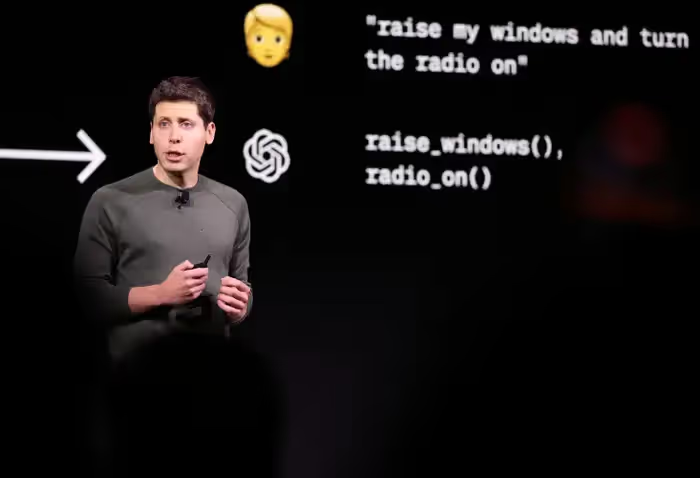OpenAI has closed a mammoth $6.6 billion funding round, its valuation to a staggering $157 billion post-money, well nigh double the $80 billion value it reached earlier this year. This Thrive Capital-led round had hefty bets from Microsoft, Nvidia, SoftBank, Khosla Ventures, Altimeter Capital, Fidelity, and MGX. Thrive alone reportedly put in around $1.3 billion, and Microsoft just under $1 billion.
This size shows commitment to expanding AI capabilities, with plans to invest heavily in research, computing power, and product dev. The scale—the largest ever VC round—proves the capital-intensive nature of AI development. OpenAI has reportedly spent $7 billion on model training and $1.5 billion on staffing. A single model, GPT-4, cost over $100 million to train. Running ChatGPT was said to cost $700,000 a day at one point.
OpenAI’s rapid rise can be traced back to the advent of ChatGPT in late 2022. Since then, it has grown to serve 250 million weekly active users, including 11 million subscribers to ChatGPT Plus and 1 million paying customers. With demand for generative AI tools soaring, its revenue has gone through the roof, annualized at $3.4 billion.
Last month, it generated $300 million, a 1,700% increase since early 2023. It projects revenue to reach $3.7 billion by the end of 2024 and a staggering $11.6 billion in 2025. By 2029, OpenAI expects its annual revenue to hit $100 billion—comparable to the current revenue of global giants like Nestlé.
💭
OpenAI’s current worth puts it in league with McDonald’s and Nike. A $100 billion annual revenue (by 2029) would rival today’s revenue of tech heavyweights like Oracle and Intel, and more than household names like Coca-Cola and Disney.
Despite being on the right side of figures, the company deals with substantial operating costs. Its ops depend heavily on Nvidia’s GPUs, which are essential for training and running large language models. As a result, OpenAI is expected to incur huge losses, possibly as much as $5 billion this year.
This is indicative of the immense financial burden AI companies face, as they must invest in both cutting-edge hardware and the top talent needed to maintain a competitive edge. OpenAI’s reliance on Nvidia hardware, however, has prompted speculation that it may eventually move toward developing its own AI chips and data centers to reduce dependence on third-party suppliers.
Brad Gerstner of Altimeter Capital hammered on an OpenAI IPO for more transparency and accountability, underscoring the role AI will play in reshaping industries, noting “the public should have the opportunity to benefit from the enormous value that AI could generate, especially in light of the societal disruptions it might cause, such as job losses”.
The competition on the landscape is not any less intense. Rivals like Anthropic and xAI have raised humongous capital, with Anthropic banking $9.7 billion and xAI, founded by famous tech billionaire Elon Musk, getting over $6 billion. Cohere and Mistral have also raised considerable sums, though their war chests remain relatively modest at around $1 billion each.
When it comes to video generation, competitors like Runway and Luma Labs have outpaced the crowd in bringing high-fidelity video models to market. OpenAI is expected to launch its video generation model, Sora, later this year to keep pace.
Beyond these, OpenAI’s internal dynamics have been shifted by a wave of high-profile departures: CTO Mira Murati, Chief Research Officer Bob McGrew, and Research VP Barret Zoph. Their resignations follow those of key hands like Andrej Karpathy, Ilya Sutskever, Jan Leike, and co-founder John Schulman. These exits raise questions about long-term direction and Sam Altman’s ability to maintain stability amidst such turnover.
More importantly, its corporate structure remains in flux. Its nonprofit governance model, which caps investor returns, is needfully transitioning toward a for-profit structure. Which could better flexibility in raising capital and scaling ops, as investors would have more potential for returns.
Per Bloomberg, the latest funding round includes provisions allowing investors to withdraw their capital if OpenAI does not complete this restructuring within the next two years. The transition, if it occurs, could then pave the way for a public offering, something Gerstner advocated as a necessary step to increase OpenAI’s transparency.
As OpenAI continues its rise, the stakes are high. It is navigating intense competition and expensive maintenance of its AI leadership while weathering internal transitions and the pressure to restructure its business model. With $157 billion in valuation, tens of billions of dollars in projected revenue, and a widening user base, its next steps would be under close watch.
Get passive updates on African tech & startups
View and choose the stories to interact with on our WhatsApp Channel
Explore




